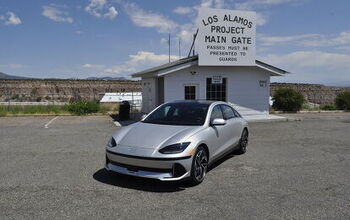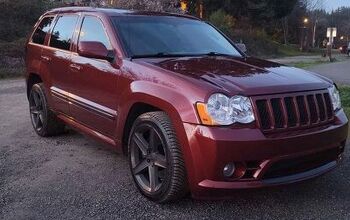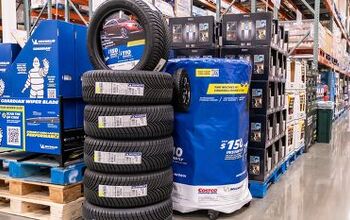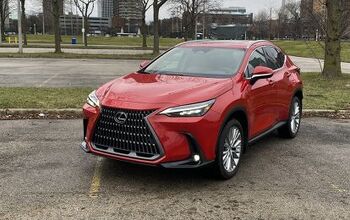U.S. Treasury Loses $11.2 Billion In Accounting Of GM Bailout
Detroit Free Press reports the U.S. Treasury lost $11.2 billion in taxpayer money from the rescue of General Motors back in 2008, up from the $10.3 billion estimated after the agency sold its remaining shares back in early December 2013. Part of the final figure came as a write-off of an $826 million “administrative claim,” which was found in a report by the Office of the Special Inspector General for the Troubled Asset Relief Program. The overall figure pales in comparison to the $50.2 billion given by both Bush and Obama administrations between 2008 and 2009 to GM as the automaker struggled through its financial crisis at the onset of the Great Recession.
In other financial news, Automotive News reports the automaker’s new financial arm, GM Financial, has launched a pilot program for prime-risk consumers in preparation for an expansion into the market later this summer. In addition, the auto lender proclaimed last week that it began GM-backed lending in the near-prime market during Q1 2014 alongside its subvented subprime loans. Finally, GM Financial reported a net income of $145 million during the same period — acquiring the majority of former GM lender Ally Financial’s International Operations, as well — with loan and lease originations totally $2.1 billion in the United States and Canada, $4.2 globally.
Another former GM subsidiary is looking into “improper payments” made by employees in China. As Reuters reports, Delphi found a number of these payments by manufacturing facility employees, which could be in violation of the U.S. Foreign Corrupt Practices Act. The supplier is working closely with both the Securities and Exchange Commission and the U.S. Department of Justice, as well as contacted outside counsel to assist. Delphi warned that if what they found was true, the violations “could result in criminal and/or civil liabilities and other forms of penalties or sanctions.”
The Detroit News says GM has begun construction on a new motorsport engine design and production facility set to open in 2016 within its Global Powerplant headquarters in Pontiac, Mich. One hundred engineers and technicians are expected to transfer from their posts in Wixom, Mich. to 138,000-square-foot Performance and Racing Center in Pontiac by the middle of 2015, where they will work alongside the production engine team in sharing technology gathered from the track. The center, part of a $200 million investment into GM’s Pontiac facility, will offer an electric motor lab and a gear center to aid in the development of advanced electric motors and transmissions.
Finally, Forbes posits that GM’s lack of thorough engagement with its customers could once again give some loyalists pause before giving their favorite brand the benefit of a doubt. In one example, the automaker — which already had fewer engaged consumers pre-recall than the likes of Ford, Hyundai and Toyota with their respective recalls — posted the largest post-recall decline while Toyota and Hyundai lost the least after their recalls. The low engagement figures for GM could be a sign of things to come as it works its way through its many issues beyond the original recall in February 2014.
Seattle-based writer, blogger, and photographer for many a publication. Born in Louisville. Raised in Kansas. Where I lay my head is home.
More by Cameron Aubernon
Latest Car Reviews
Read moreLatest Product Reviews
Read moreRecent Comments
- Master Baiter I thought we wanted high oil prices to reduce consumption, to save the planet from climate change. Make up your minds, Democrats.
- Teddyc73 Oh look dull grey with black wheels. How original.
- Teddyc73 "Matte paint looks good on this car." No it doesn't. It doesn't look good on any car. From the Nissan Versa I rented all the up to this monstrosity. This paint trend needs to die before out roads are awash with grey vehicles with black wheels. Why are people such lemmings lacking in individuality? Come on people, embrace color.
- Flashindapan Will I miss the Malibu, no. Will I miss one less midsize sedan that’s comfortable, reliable and reasonably priced, yes.
- Theflyersfan I used to love the 7-series. One of those aspirational luxury cars. And then I parked right next to one of the new ones just over the weekend. And that love went away. Honestly, if this is what the Chinese market thinks is luxury, let them have it. Because, and I'll be reserved here, this is one butt-ugly, mutha f'n, unholy trainwreck of a design. There has to be an excellent car under all of the grotesque and overdone bodywork. What were they thinking? Luxury is a feeling. It's the soft leather seats. It's the solid door thunk. It's groundbreaking engineering (that hopefully holds up.) It's a presence that oozes "I have arrived," not screaming "LOOK AT ME EVERYONE!!!" The latter is the yahoo who just won $1,000,000 off of a scratch-off and blows it on extra chrome and a dozen light bars on a new F150. It isn't six feet of screens, a dozen suspension settings that don't feel right, and no steering feel. It also isn't a design that is going to be so dated looking in five years that no one is going to want to touch it. Didn't BMW learn anything from the Bangle-butt backlash of 2002?


































Comments
Join the conversation
TARP was designed to roughly break even and it did. In 2008-2009, the consensus was that all of the disbursement to the auto industry (about $70 billion) was going to go to zero. As it was, New GM Common Stock didn't sell for as much as expected, so it cost $10 billion. And, GM wasn't 'bailed out' .... it went bankrupt. The owners/stock holders received $0. The bankruptcy was done on favorable terms for everyone BUT the stock holders. When you have a huge financial crisis and one of your countries largest manufactures is going bankrupt, then how does it NOT make sense to use government funds to minimize the economic volatility? The bailout of AIG http://www.treasury.gov/initiatives/financial-stability/TARP-Programs/aig/pages/default.aspx ended up with a $22.7 billion profit for the government. Once again, the stock holders/owners were roughly wiped out (lost 92% of their investment). The Treasury made http://www.treasury.gov/initiatives/financial-stability/TARP-Programs/bank-investment-programs/Pages/default.aspx at least $28 billion on the bank investment program. The single most surprising outcome is that Ally Financial aka GMAC is going to end up in the black. http://www.rawstory.com/rs/2014/04/09/treasury-sets-2-375-billion-stock-ipo-to-finalize-bailout-of-ally-financial/ So .... how exactly was TARP a cost to the taxpayer? I have to laugh when representatives who live in districts who will never pay close in taxes to what they collect in benefits (think Baltimore City) -- have the audacity to use the phrase TAXPAYER's MONEY. In most parts of the city, you would be hard pressed to find a single taxpayer. Since all the bailed out companies wiped out the owners/stock holders, who lost between 90% and 100% of their investments -- and the Federal Government made money overall on TARP --- what is this about? The bailout wan't for the owners of the bailed out companies -- it was for the remainder of the country that would have suffered in a deflationary spiral (debt deflation) -- which we saw between 1929 and 1940. And since the Federal Government collects roughly 20% of GDP, including 1/3 of all corporate profits in perpetuity -- the Government is the largest 'stake holder' in the private sector. People are entitled to their own opinions but not their own facts. And the fact is that TARP made money. Banks -- +28 billion. AIG +22 billion Auto -$10 billion The government wasn't giving money away. They were selling exit visas from hell. And even they couldn't lose money on that.
The Fed and the government's management of the 2008-9 auto bankruptcy crisis was pretty good all things considered. Normal Chapter 11 bankruptcy was out of the question. Even if DIP financing had been available (it wasn't), Chapter 11 would have shut down much of the industry for many months while the lawyers and accountants tried to sort things out. Loan covenants and clauses in franchise agreements would have been triggered willy nilly. Suppliers would have gone under. The Great Recession would have morphed into another Great Depression. Even Ford management supported the bailout because a Chapter 11 alternative would have ruined so many of their suppliers. Of course the auto crisis arose in the first place from deep flaws in the corporate cultures of GM and Chrysler, e.g. taking private jets to the meetings in Washington??? To what (if any) extent has this been fixed? That would make an interesting thread.